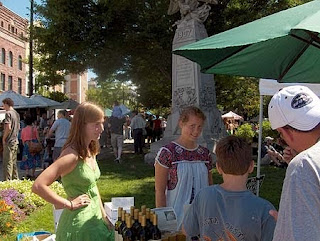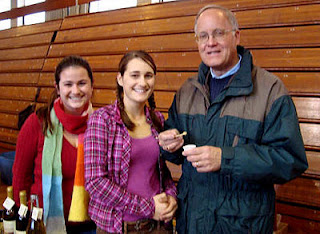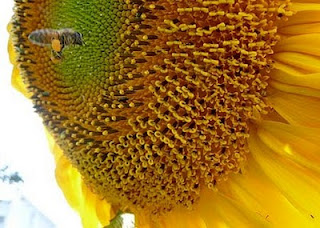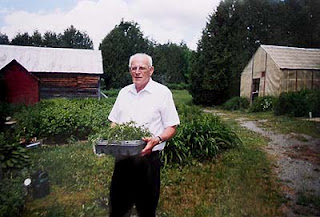Honey Bee Economics
The humble honey bee. This singing whir of golden hue embodies unselfishness and unconditional love. Small and unassuming, this insect offers us numerous opportunities to learn from the collective intelligence of its society. By examining the honey bee’s example, we find clues to how we might approach the work of bringing forth a new and sustainable society, and thus a new world.
Let’s look at the hive’s economy. Like humans, honey bees utilize natural resources to help fuel the economic engine of their society. Nectar, pollen, propolis, and water are “harvested” and “mined” from the earth to provide the raw materials for food production, housing construction, health care and maintaining a hospitable atmosphere 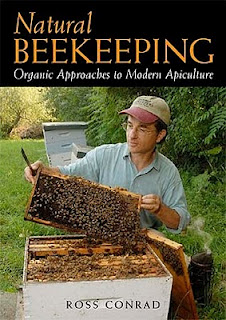 within the honey bee city-state so all its citizens can live comfortably. In acquiring these resources, the bees do little harm to the natural world. Unless they are threatened and are forced to defend themselves, they do not hurt so much as a leaf during their foraging trips. In fact, due to their role as pollinators, the honey bees actually leave the environment in better shape than they find it, as they take what they need to survive. The bees’ example proves that it is possible to take what one needs from the world in a manner that helps the environment, or at least reduces damage.
within the honey bee city-state so all its citizens can live comfortably. In acquiring these resources, the bees do little harm to the natural world. Unless they are threatened and are forced to defend themselves, they do not hurt so much as a leaf during their foraging trips. In fact, due to their role as pollinators, the honey bees actually leave the environment in better shape than they find it, as they take what they need to survive. The bees’ example proves that it is possible to take what one needs from the world in a manner that helps the environment, or at least reduces damage.
Another profound lesson of honey bee economics comes in the form of the power of their community. All activity within the hive is directed at furthering the interests of the entire colony. With no thought of the “self”, the bee’s constant focus of effort is on the local scene and the good of the whole community. Workers step in and do whatever needs to be done within the hive, working constantly without complaint. They feed each other, build places to live for one another, cool each other when hot, and snuggle to provide warmth when cold. When one job is done, they move along to another, always contributing to the betterment of their collective sisterhood. They work cooperatively as a team, like a single organism, following their inner guidance, and doing what is right without the use of force or threats from a leader.
The bees’ cooperative community stands in stark contrast to western society. We are all encouraged to “go it alone” and provide our own source of income in order to procure a home, transportation, food, clothing, etc. And yet, the idea of the American nation being built on rugged individualism is a myth. Most of the truly momentous advances in the United States came about only when folks rallied together for a common cause, from the signing of the Declaration of Independence to the election of an African American president. One way we can overcome our current difficulties will be to rediscover 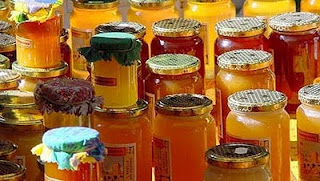 the power of working together in community, and, like the bees, learn to rely upon each other once again. We can get through these tough times if we will only help each other out. By showing our love and providing for or sharing with each other, we provide for ourselves. When our community is doing well, we tend to do well, and when our community suffers, we don’t do as well.
the power of working together in community, and, like the bees, learn to rely upon each other once again. We can get through these tough times if we will only help each other out. By showing our love and providing for or sharing with each other, we provide for ourselves. When our community is doing well, we tend to do well, and when our community suffers, we don’t do as well.
While conventional wisdom says we should work at a single career our entire working life in order to reach a level of skill and professionalism that will allow us to maximize our earnings, each one of us has many talents. Like the bees, we could build a society that supports us in taking on different roles and jobs as our life path evolves, or the needs of our communities change. These are the kinds of alternatives that we can learn from the humble honey bee – alternatives that have true freedom, health, prosperity, and peace as their core.
There is much we can learn about the enduring power of harmonious community that is manifested in the forty-million-year-old society known as the honey bee hive. Since they survived the last era in which large scale extinctions of species were the norm on earth, and since they are still around today, honey bees can provide us with useful clues to improve our society.
The hardest of times are not necessarily the worst of times if you will keep to love, empathy, and imaginative living. The challenges ahead have little to do with Wall Street, and everything to do with changing the way we live, and the way we relate to each other, the earth, and ultimately, ourselves. For those willing to listen, the wisdom of the honey bee can help to guide our way through these dark times.
As the the Elders of the Oraibi Arizona Hopi Nation remind us, “We are the ones we’ve been waiting for”.
